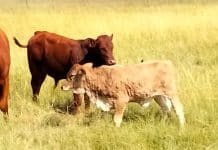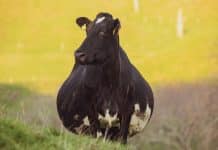Many auction houses, buyers and producers have embraced electronic auctions in order to adapt to the current situation. The South African livestock industry has suffered a tremendous setback with challenges posed to physical auctions. However, the industry is nothing if not resilient. The first ban on livestock auctions was imposed during the outbreak of foot-and-mouth disease (FMD) in 2019.
The industry was dealt a second blow this year when the COVID-19 pandemic reached South Africa, and the subsequent lockdown regulations caused further disruptions due to the implementation of additional restrictions on auctions.
The only viable alternative
Electronic auctions are regarded as the only workable solution to continue with sales during a time in which restrictions on the movement of both animals and people threaten the sustainability of traditional auctions.
Auctions play a crucial role in agriculture as they form an integral part of trading in the industry and allow for safer transactions, which is why it is the preferred trading mechanism for livestock. During an auction, sellers put lots up for sale and buyers bid on each lot. The winning bidders then receive the lots on which they bid, and the sellers receive payment for the products offered in their sold lots.
Auctions can be held in the following three ways:
- Traditional auctions, which consist of multiple buyers and sellers physically gathering at a central auction site.
- Virtual auctions, which are conducted exclusively on an online platform with no physical presence of sellers, buyers or lots at the auction site.
- Online auctions, which are a combination of physical and virtual auctions. Off-site buyers get access to a physical auction through an online platform.
Electronic auctions include both virtual and online auctions, whereas physical auctions refer to traditional auctions.
Benefits of electronic auctions
When physical auctions are restricted, one of the main advantages of electronic auctions is that sales can continue to maintain cash flow.
In addition, biosecurity is more manageable with electronic auctions. The only two locations involved are that of the seller and the buyer, which decreases the risk of spreading disease among animals and humans alike. Online auctions that are held during lockdown periods, require numerous permits to prove that the people who will attend pose no biosecurity threat and comply with all stipulated health and safety regulations.
In contrast to physical auctions, electronic auctions result in less contact between humans and animals from various places. This reduced contact results in a more traceable value chain. Livestock theft is discouraged while traceability is improved.
Electronic auctions are commonly hosted on the producer’s property with animals being listed prior to the auction. Even though auction dates and times are available, no one except the seller has access to the animals, and the transport details are handled privately.
At physical auctions livestock thieves can easily disappear into the crowd by using fake names and switching ear tags. Smaller physical auctions with few traceability measures and little police presence in place, offer the ideal opportunity to offset animals soon after they were stolen.
Electronic auctions also offer a more extensive range of products and participants at lower costs in a timelier manner. Participants do not need to travel to auction sites and are not restricted to a limited spectrum of products and traders. Scenarios are avoided in which much time and effort are invested only for participants to return home unsatisfied – physical auctions sometimes leave buyers empty handed, while sellers go home with unsold lots or are forced to accept lower-than-expected prices.
In addition, electronic auctions are climate smart. Less transport is needed, which reduces greenhouse gas emissions and animal stress. Animals with lower stress levels are usually healthier, and they do not require as many pharmaceutical products or chemicals that may be detrimental to the environment. These animals also perform better.
Electronic auctions are regarded as the only workable solution to continue with sales during a time in which restrictions on the movement of both animals and people threaten the sustainability of traditional auctions.
Investment in agriculture is also enhanced as people can trade agricultural products from anywhere in the world. Buyer potential is increased, not only locally, but also internationally. Additional benefits are derived from the fact that these auctions form part of the Fourth Industrial Revolution. The ability to accommodate a huge number of participants in different locations, along with vast product volumes is a significant benefit of electronic trading.
Furthermore, agrarian transformation is achieved with electronic auctions through the linking of rural communities with the Internet, dissemination of farming knowledge, provision of timely price information, allowing producers to execute transactions and trade, elimination of intermediaries, reduction of unethical trading, and transformation of international agricultural supply chains.
Drawbacks of electronic auctions
Perceived quality differences between virtually and physically auctioned products is one of the main disadvantages of electronic auctions. While these differences are minimal in the case of commodities such as meat carcasses, they are amplified with differentiated products such as stud animals, as buyers prefer to see the product before purchase. Displaying the offered livestock through photographs and videos have, however, mostly bridged this gap.
Accessibility in terms of Internet access and knowledge of auctioning platforms may pose challenges to producers who are not familiar with technology and/or do not have the necessary technological devices to access these auctioning platforms. Load shedding and Internet unreliability may also inhibit participation in these auctions.
Con artists, scamming websites and fraudulent auctions may utilise electronic auctions to exploit unsuspecting buyers and sellers. Participants may find it more difficult to detect foul play over the Internet compared to face-to-face dealings.
In addition, buyers might pay for a product that they either do not receive at all or do not receive at the stated quality. Sellers also run the risk of delivering their product without receiving compensation. Therefore, auction houses must ensure that buyers pay before receiving the product and that the money reaches the seller after the transaction has been completed.
Lastly, the lack of interpersonal interaction may be a significant drawback as people are more expressive and emotional at physical auctions and rely on interpersonal communication when buying wholesale livestock. At virtual auctions, there is also no opportunity for networking or keeping up to date with news from other producers.
The matter of price
Many producers have raised concerns about whether they will be able to receive higher prices with electronic auctions. Although animals may initially fetch lower prices at electronic auctions in comparison to physical auctions, prices will increase as buyers grow accustomed to electronic auction platforms.
Sellers have access to updated market information with electronic auctions and therefore have increased bargaining power. Further benefits result from offering products that are traded less often and that are subject to significant price fluctuations. Storage and refrigeration facilities that extend the lifetime of livestock products such as wool or semen can also increase sellers’ bargaining power.
The way forward
As the outbreaks of FMD and the new coronavirus have highlighted, the livestock sector can no longer solely depend on physical auctions. Many organisations have successfully hosted both virtual and online auctions. Some have even fetched record prices.
But while virtual auctions supply a lifeline during these uncertain times and combine the benefits of traditional and virtual auctions, they will most likely not be the norm once the industry returns to business as usual.
There is something special about smelling the animals and experiencing the hype of the audience, which cannot be replicated virtually. – Chéri-Lynn Steyn, Department of Agricultural Economics, University of the Free State
For more information, send an email to
Chéri-Lynn Steyn at SteynC2@ufs.ac.za.







